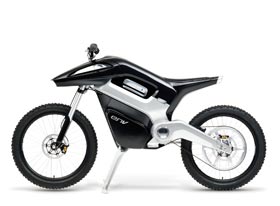
 |
| all news articles | by topics |
|
news
articles about singapore's wild places
|
| National
Geographic 2 Aug 05 Fuel Cell Motorbike to Hit U.S. Streets John Roach for National Geographic News  A
sleek, almost silent, nonpolluting fuel cell-powered motorcycle is set to
begin gliding down U.S. streets by the end of 2006. The bike is dubbed the
ENV (pronounced "envy"), short for Emissions Neutral Vehicle. A
sleek, almost silent, nonpolluting fuel cell-powered motorcycle is set to
begin gliding down U.S. streets by the end of 2006. The bike is dubbed the
ENV (pronounced "envy"), short for Emissions Neutral Vehicle. The London-based company Intelligent Energy decided to develop the bike itself after years of cool reception to its fuel cell technology from manufacturers. "We wanted to show how good the technology is right now and basically build what we thought would be a technical example, albeit an example that's wonderful and stimulates interest," said Andy Eggleston, ENV project director. Since its unveiling earlier this year, the ENV has generated enormous interest—proof that the public is ready to embrace fuel cell technology, Eggleston said. The motorcycle has a top speed of 50 miles an hour (80 kilometers an hour) and can run for 100 miles (160 kilometers) or up to four hours on a tank of compressed hydrogen. A fill-up costs about four dollars (U.S.). ENV makes no more noise than a home computer and emits only heat and water. Users have compared riding the nearly silent motorbike to skiing, sailing, surfing, and glider flying. "If you go for a ride in the countryside, as you ride through it, you can smell the countryside, hear the birds singing, and you are not disturbing nature," Eggleston said. "Birds will not fly out of the way because they are terrified of the noise." Intelligent Energy plans to sell the motorbike for between U.S. $6,000 and $8,000. The company believes the ENV will appeal to both urban commuters and recreational riders. Core Technology At the heart of the hydrogen-fueled motorbike is a compact, proton exchange membrane (PEM) fuel cell. The cell converts the chemical energy of hydrogen and an oxidant (in this case, oxygen) to generate electricity. Air ducts in the ENV's handlebars supply the fuel cell with oxygen, while hydrogen stored in a pressurized bottle serves as the gas tank. The fuel cell itself is composed of layers of metal plates fitted with membranes and electrodes. The fuel cell "separates the hydrogen atom into protons and electrons, and the electrons are then collected to form an electric current to power the motor," Eggleston explained. "The protons recombine with the oxygen in the air that's also flowing through the fuel cell and is then expelled as water vapor." Electricity produced by the fuel cell is routed to a stack of batteries and an electric motor, which provides the bike's propulsive power. A cooling fan emits the fuel cell's only noise Intelligent Energy's fuel cell, called the Core, generates a kilowatt of electricity. By pairing the cell with a battery pack, the bike achieves a maximum load of six kilowatts to provide added punch during acceleration. Eggleston notes that the Core is detachable from the bike and can be used to power a home or anything else, as long as a hydrogen supply is available. Cell for the Future? NASA embraced fuel cell technology in the 1960s to power spacecraft, but fuel cells have largely eluded the general marketplace. High material costs, such as those of platinum catalysts (which facilitate the reaction of hydrogen and oxygen), have prevented widespread commercialization of fuel cells, said Douglas Nelson. Nelson is a mechanical engineer and director of the Center for Automotive Fuel Cell Systems at the Virginia Polytechnic Institute in Blacksburg. However design refinements are beginning to lower fuel cell costs, Nelson says. "People are getting better and using less and less platinum, and membrane costs have come down too," he said, adding that mass production would further reduce costs. Nelson has not seen the ENV but is familiar with the concept. He says the biggest hurdle Intelligent Energy must clear to successfully sell their technology is a lack of hydrogen infrastructure—gas pumps, if you will. Hydrogen is the most abundant element in the universe. But the element is usually found as part of other compounds, such as fossil fuels, plant material, and water. Canisters of pure hydrogen are readily available from hydrogen producers. But roadside hydrogen stations are few and far between. To overcome this hurdle, Intelligent Energy is currently developing devices called reformers that extract hydrogen from biodiesel fuels (typically made from vegetable oils or animal fats) and ethanol (generally made from grain or corn). The units would sell for around U.S. $1,500 and could produce enough hydrogen to fill up the ENV for about 25 cents per tank, Eggleston said. The process, he added, contributes no more atmospheric emissions than plant-based raw materials of biodiesel or ethanol would emit if left to rot on the ground. "So you can get on the ENV motorbike and, for a quarter, do one hundred miles of silent, emissions-free biking," Eggleston said. "That to me is a compelling thing." links Related articles on Global issues: global warming issues, policies |
| News articles are reproduced for non-profit educational purposes. | |
website©ria tan 2003 www.wildsingapore.com |